Should California allow affirmative action? Here’s why some say the UC isn’t diverse enough
With Proposition 16 on the ballot this year, California voters will decide once again whether to permit the state to use affirmative action based on race and sex.
Its passage would repeal a 1996 ballot measure that banned the consideration of race or sex in public sector jobs, public contracting and at public schools, including the University of California system.
Supporters of Proposition 16, including the UC Board of Regents, argue that affirmative action is needed to ensure that California’s higher education reflects the diversity of the state.
Opponents view racial preferences in admissions as a form of discrimination. Some detractors also fear that affirmative action in the admissions process could harm groups admitted at higher than average rates, namely Asian Americans.
In some ways, both positions underscore how little the UC student body currently reflects the state’s demographics.
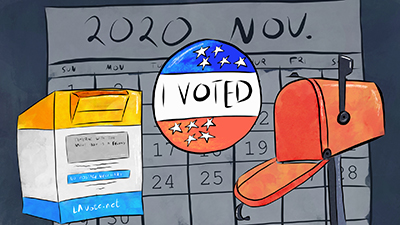
Your guide to the 2020 election
Learn more about the 12 propositions on California's ballot.
Stark disparities in the UC system
A look at the most recent admissions data shows two glaring gaps.
Comparing the California high school graduates who meet the system’s application standards with those who attend shows that Latinos are the most underrepresented group.
The percentage of Asian American freshmen from California, on the other hand, is larger than the percentage of in-state high schoolers who meet the standards.
Enrollment of Black, Native American and white freshmen from California more closely align with state demographics.
Eligible high school graduates vs. enrolled freshmen

UC has diversified since the ban, but not as fast as California
Freshmen attending UC schools in the fall of 1998 were the first group of students to be selected without affirmative action. Without considering race, the university system has diversified in part due to demographic shifts and targeted recruitment strategies.
For example, the University of California weighs applicants’ socioeconomic status and whether they’re the first in their family to attend college — race-blind strategies meant to increase diversity.
Nevertheless, freshmen admissions for California students haven’t kept pace with the changing makeup of the state’s high schools.
While Latino representation on campus has increased, the gap between California's Latino admitted freshmen and UC-eligible high schoolers has grown over time.

At the same time, the share of Asian American admitted freshmen from California has increased as the percent of eligible high schoolers has declined.
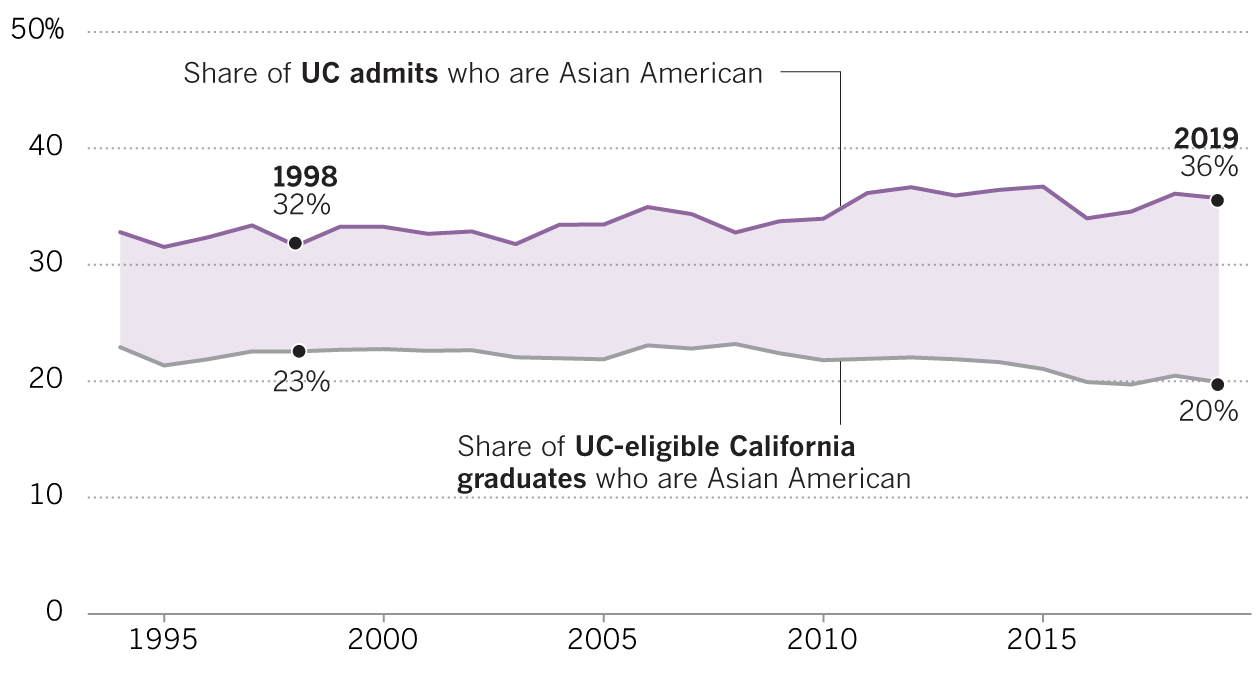
The percentage of UC-eligible Black, Native American and white high school graduates more closely mirrors the percentage of California freshman admitted to the university system, though some gaps exist.
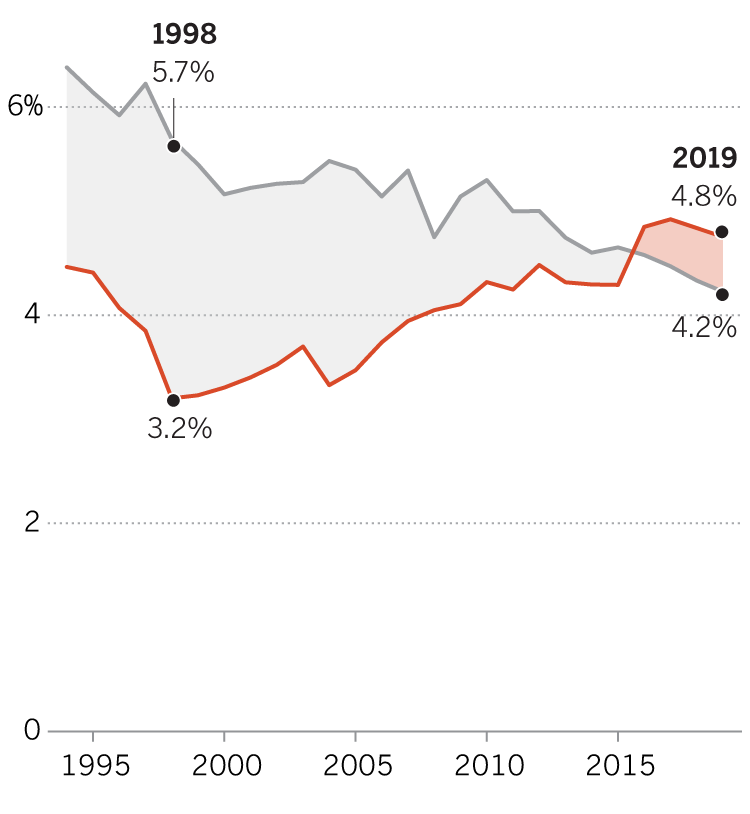
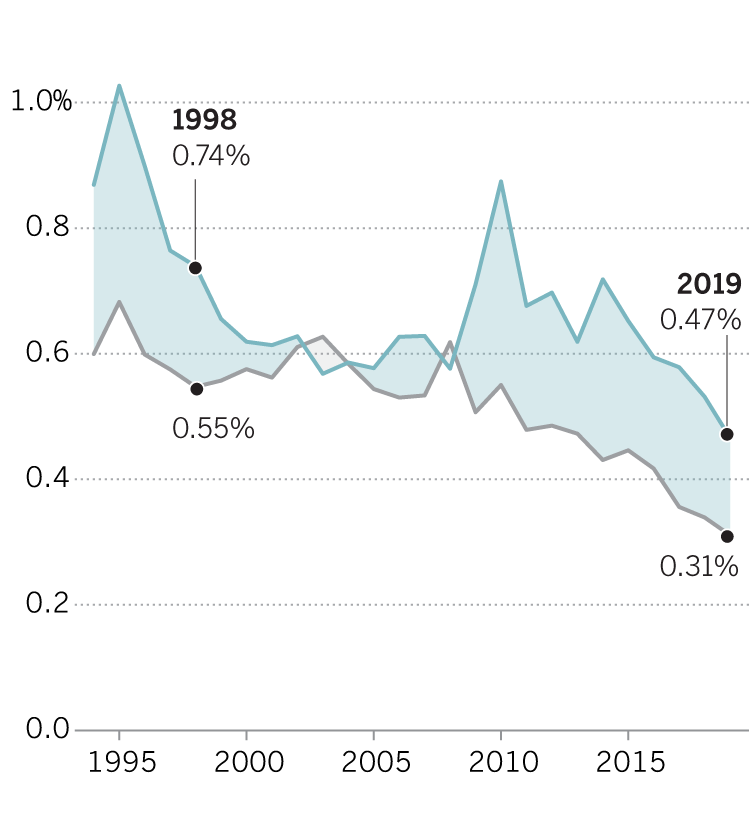
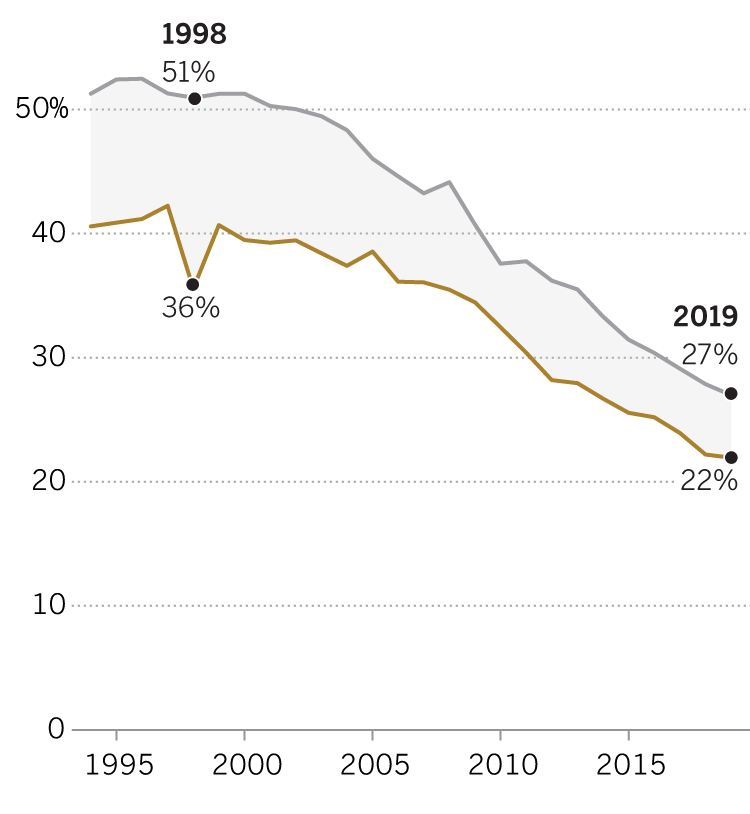
The challenge of a more selective UC
Earning admissions has become more difficult as more students seek entry to the system’s nine campuses. Twenty-two years ago, about four out of five Californians who applied were accepted as freshmen to at least one campus. Today, that figure has fallen to three out of five applicants.
Overall freshmen admission rate
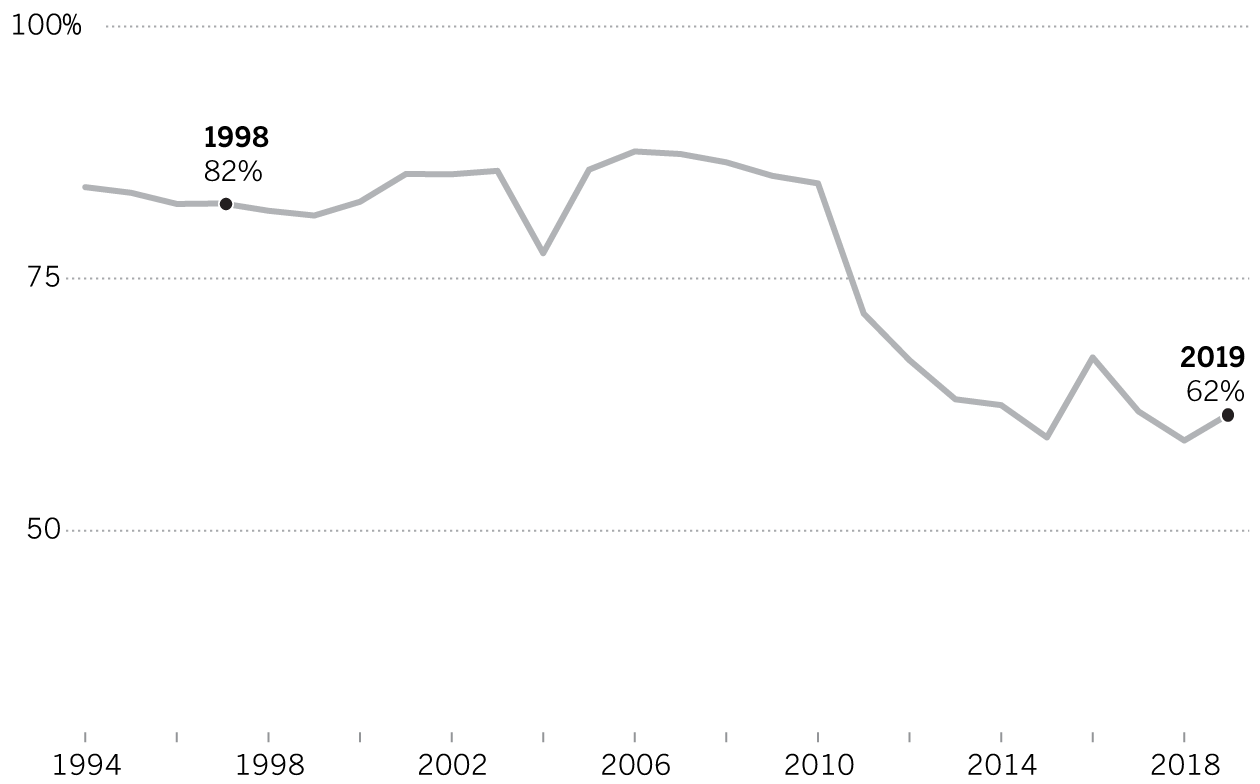
After affirmative action was banned, admission rates for Black, Latino and Native American applicants fell alongside the average admission rate, and remain below average.
Here are the admission rates for California applicants by race:
Black

Latino
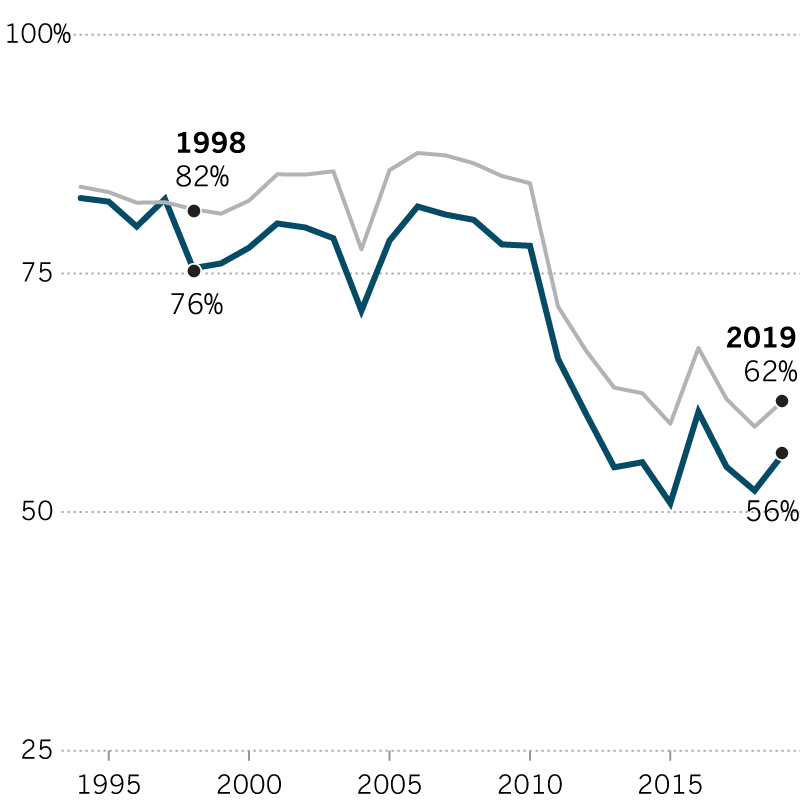
Native American
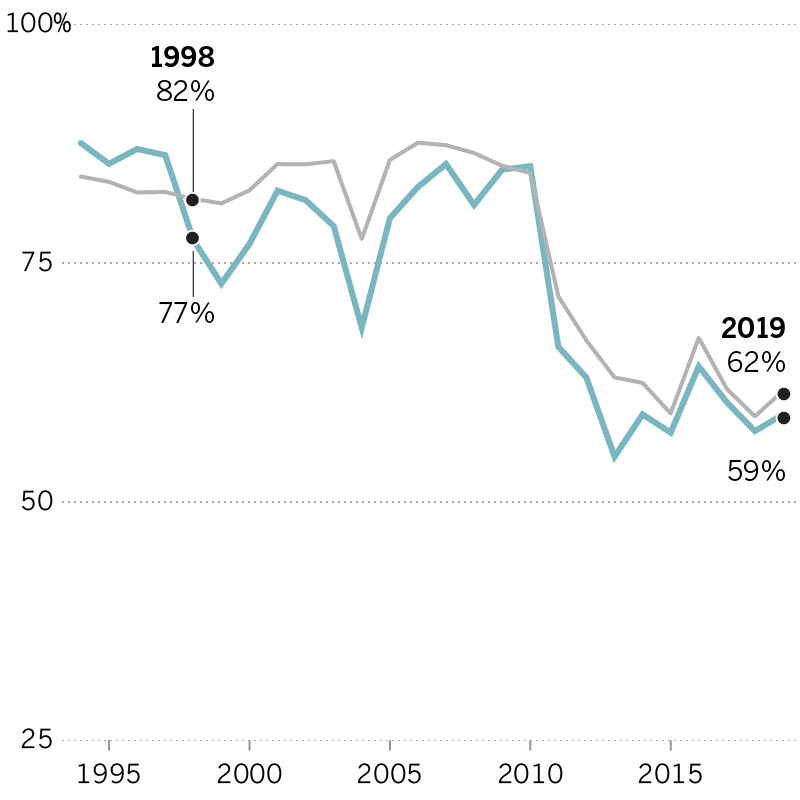
Admission rates for Asian American applicants has remained above average. The admission rate for white applicants now hews closely to the overall admissions rate.
Asian
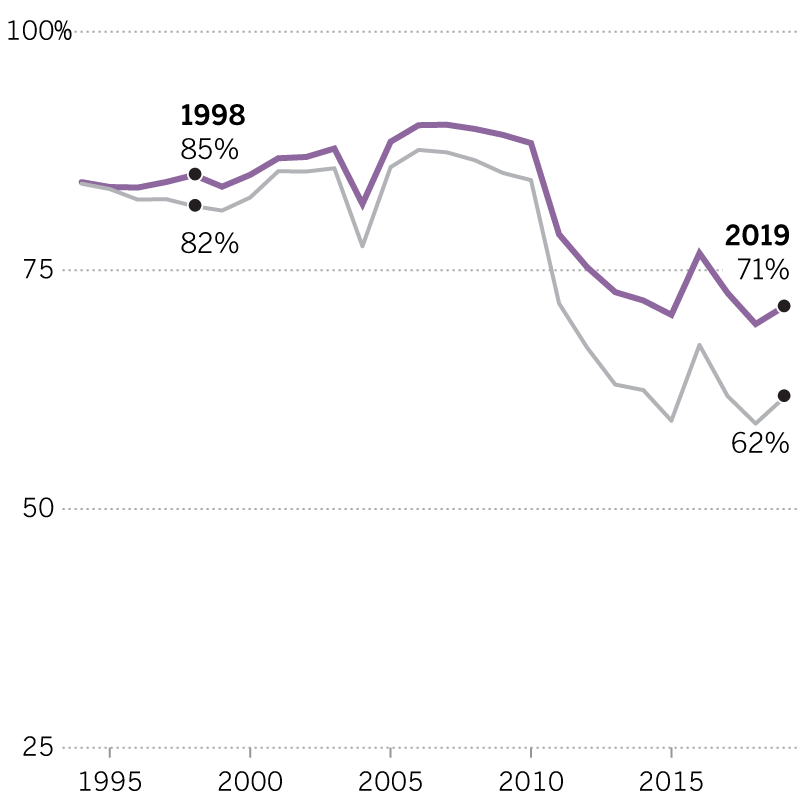
White

Gaps in representation vary by campus
In 2019, UCLA had the lowest admission rate, followed by UC Berkeley, making them the most selective schools. Riverside had the highest admission rate after Merced, which did not open to undergraduates until 2005.
Although there have been gains everywhere, the percentage of Latino freshmen admitted to more selective schools lags behind other campuses.
Latino

The percentage of white admitted freshmen declined on all campuses, but less so at more selective schools.
White

Asian Americans remain the largest group of admitted freshmen on the three most selective campuses.
Asian
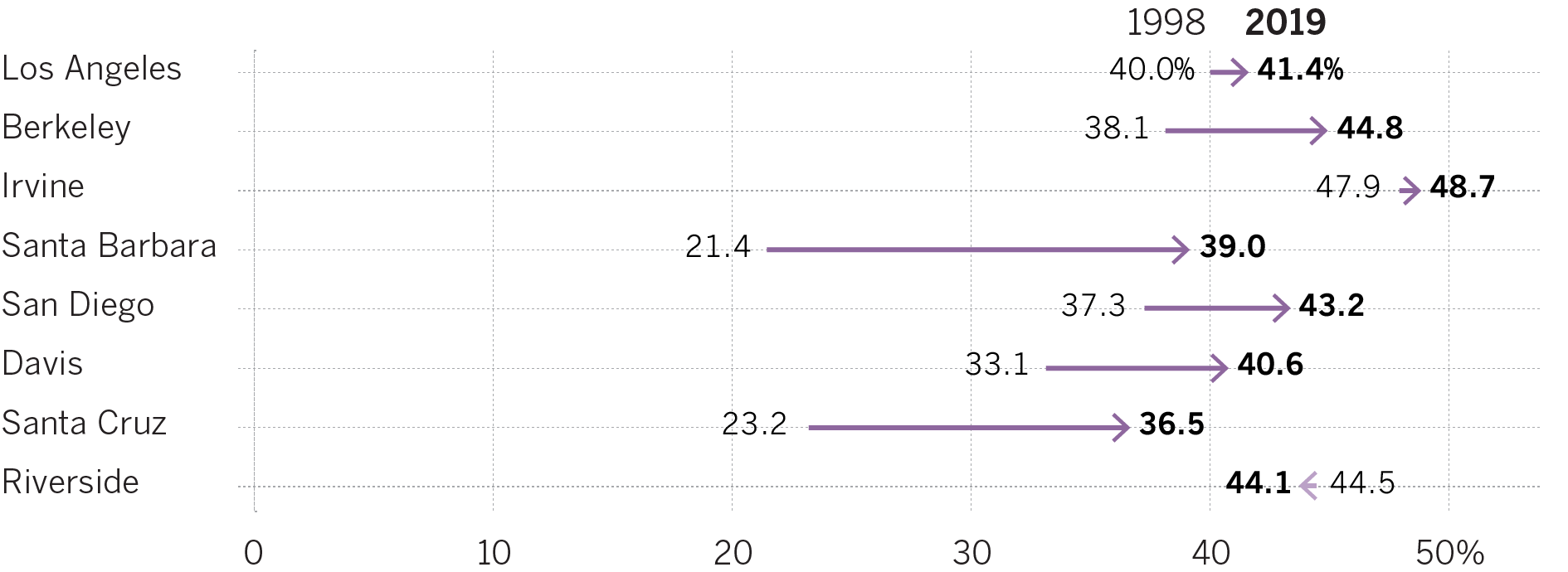
The percentage of Black admitted freshmen increased on every campus.
Black
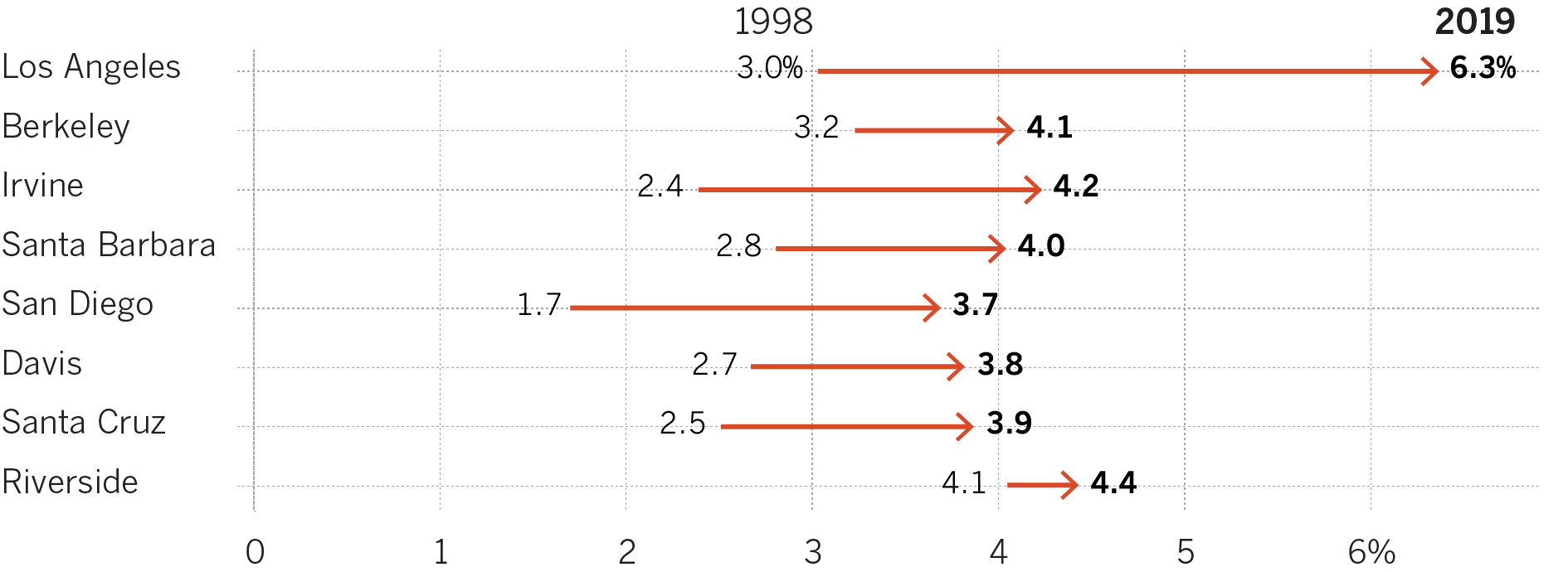
Native American students remain less than 1% of admitted freshmen on every campus.
Native American
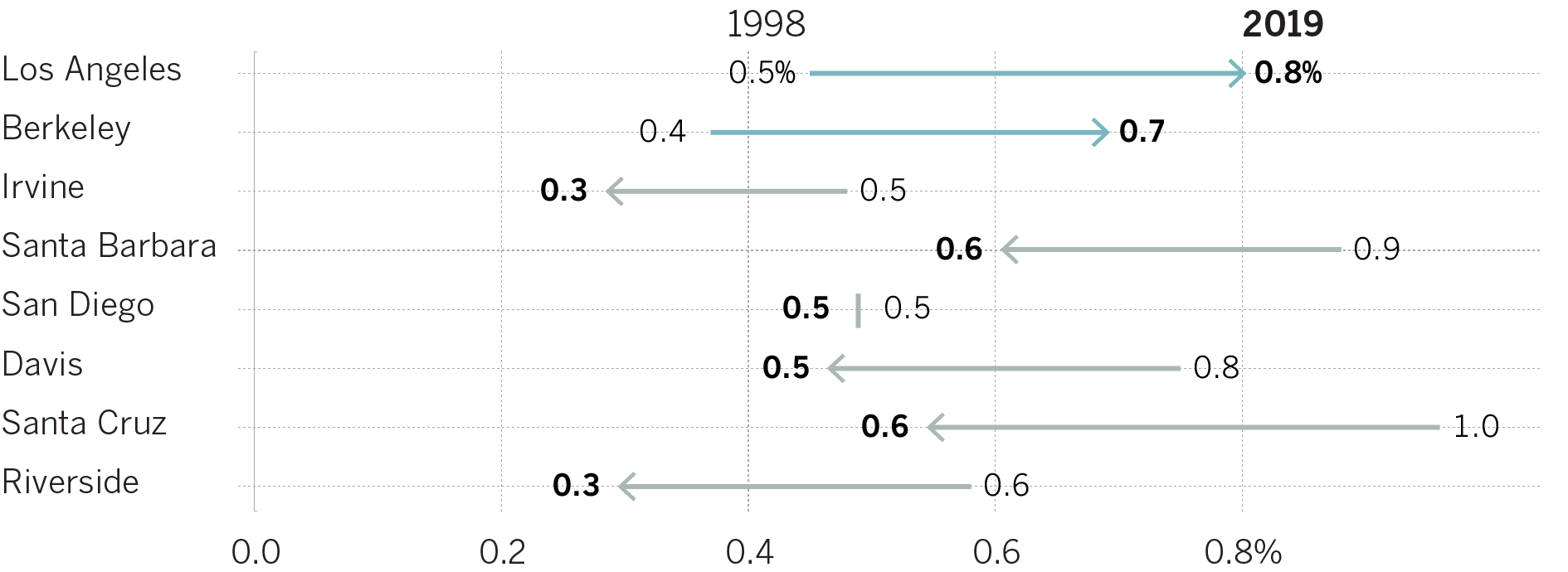
What will happen if Proposition 16 passes?
The University of California has not said specifically how its campuses would change if voters approve Proposition 16.
“It would be premature to speculate as the measure is on the November ballot,” said UC spokesperson Sarah McBride by email.
McBride added that the university "does not set targets for enrollment demographics and is prohibited from using quotas."
If the proposition passes, race would become one more factor that the university could take into account, said John A. Pérez, Chair of the Board of Regents, in an August panel with the Sacramento Press Club.
The UC system currently evaluates about 14 aspects in its admissions process. Most campuses, including Los Angeles and Berkeley, do not place a fixed value on any one of those criteria. Merced and Riverside assign quantitative values to academic and non-academic factors, and Santa Barbara uses a hybrid system that only quantifies some factors.
Unless the campuses start accepting more students, basic math says that for some groups to increase, others must decrease.
In the past four years, the UC system has kept enrollment figures fairly flat.
At Ivy League schools, where race-based affirmative action is being challenged, administrators can increase diversity by admitting more underrepresented students and fewer legacy students. The University of California doesn’t have that option. Having parents who make large donations or are alumni typically doesn’t help one’s chances of admissions, though loopholes have come to light.